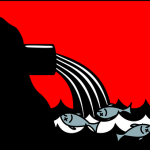
As of 20 September 2017, organisations discharging wastewater into surface water bodies (whether directly or indirectly) will be assigned wastewater discharge limits (including the maximum concentrations of polluting substances) in accordance with the adopted Regulation.
The adopted Regulation contains the lists of substances the contents of which in wastewater is regulated and subject to restrictions. Regulated substances lists depend on the area of industry and on the performed activity. For example, for food industry, the following substances and properties of wastewater are regulated:
- pH;
- biochemical oxygen demand (BOD5);
- chemical oxygen demand;
- bichromate oxidizability;
- suspended particles;
- ammonium-ion;
- nitrogen;
- phosphorus;
- water mineralisation;
- chloride-ion;
- sulphate-ion; and
- anion active surfactants.
Wastewater discharge limits are to be set for organisations that discharge wastewater into surface water bodies.
Wastewater discharge limits are to be set for each point of wastewater release into a surface water body.
Wastewater discharge limits are set by the territorial bodies of the Ministry of Natural Resources and Environmental Protection.
Law: Decree No. 16 of 26 May 2017 on Some Issues Concerning Discharge Limits for Polluting and Other Substances in Wastewater





